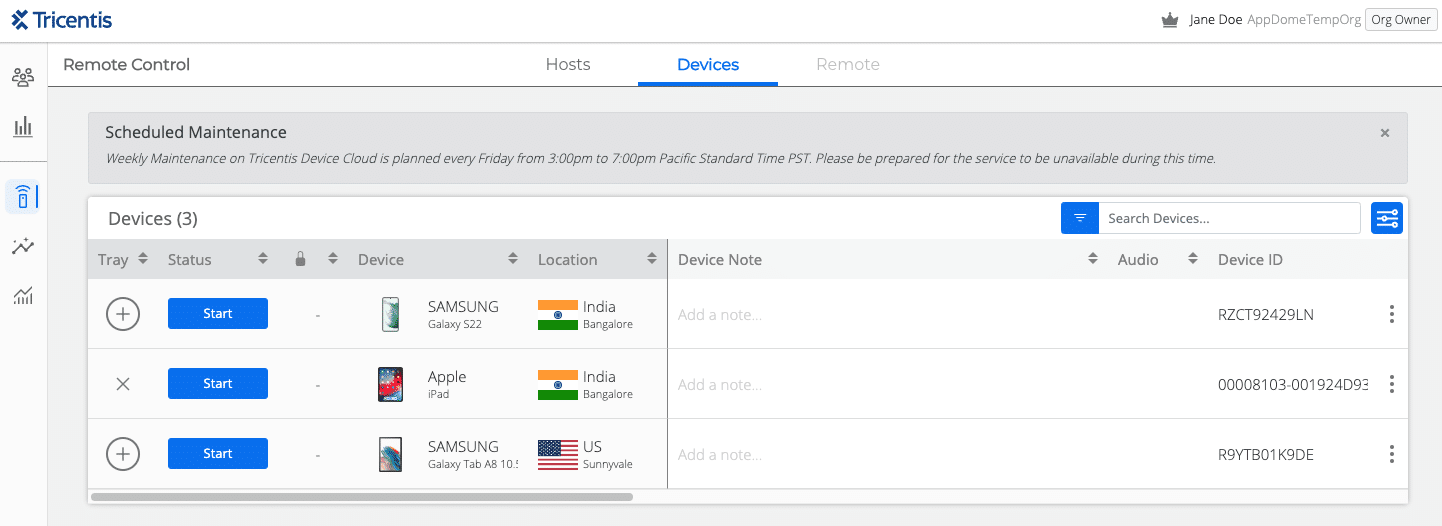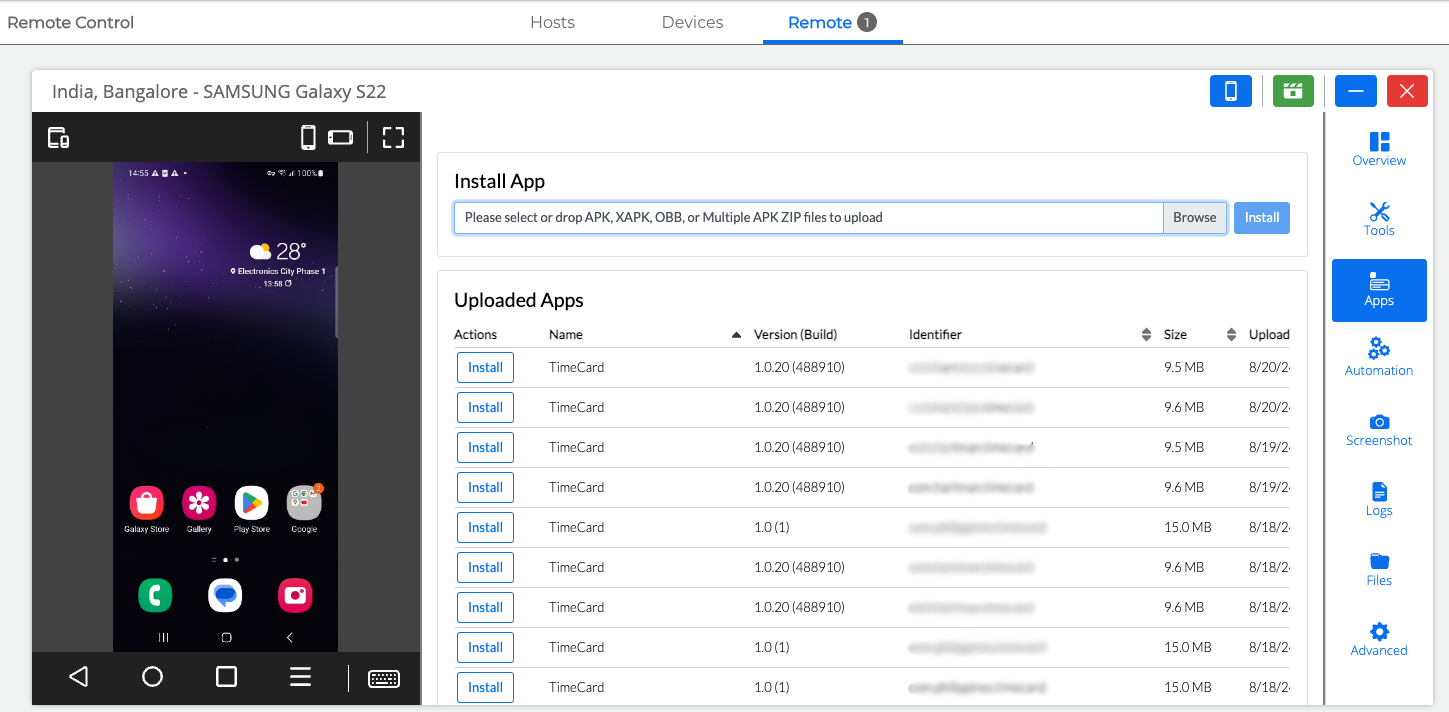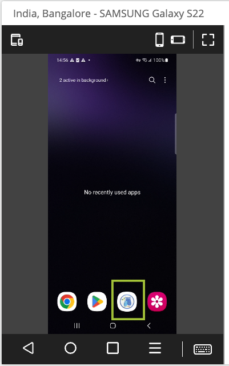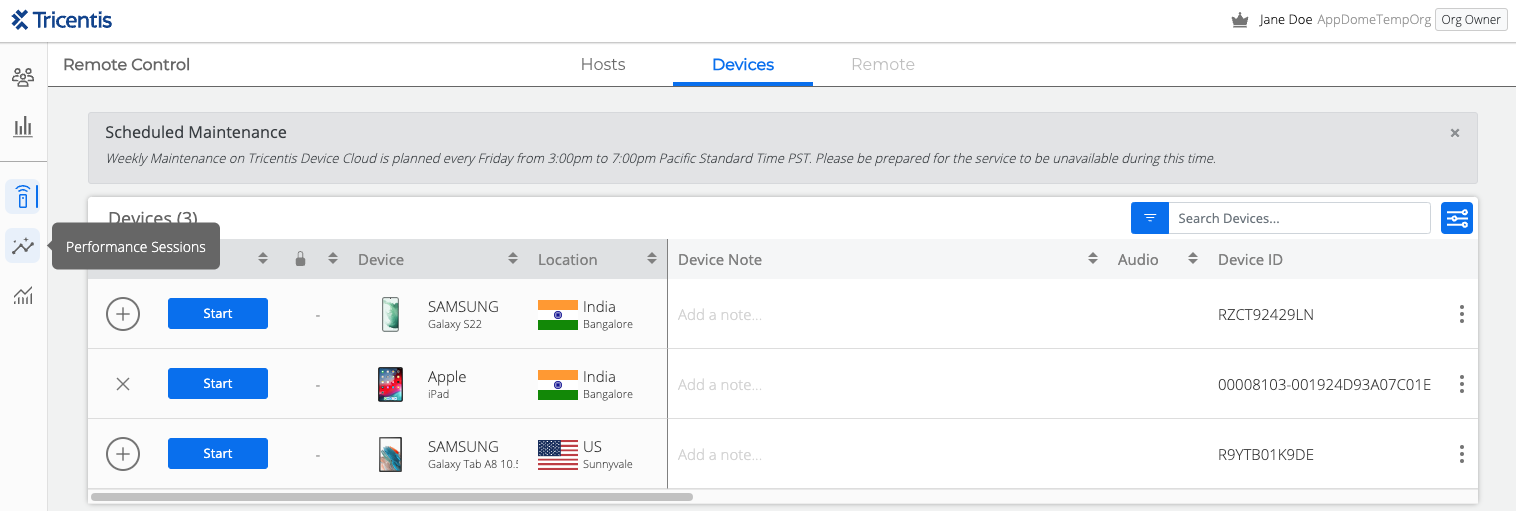Testing Appdome Build2Test-Secured Android Apps with Tricentis
Learn how to test Appdome-secured Android apps with Tricentis Device Cloud Testing suite, a versatile platform for both web and mobile application testing. Appdome integrates seamlessly with leading mobile testing solutions, empowering customers to enhance mobile app security within their existing application lifecycle with the speed and agility of DevSecOps.
Using Appdome’s Build2Test Service (Recommended)
Customers with an Appdome SRM license can use Appdome’s Build2Test service to quickly and easily test their Appdome-secured mobile apps using Tricentis Device Cloud without the need for different Fusion Sets. With Appdome’s Build2Test service, Appdome’s in-app defense model recognizes the unique signature of these testing services and allows for easy testing without issuing a security alert or forcing the app to exit, even if these services use tools such as Magisk or Frida.
For more details, see How to Use Appdome Mobile App Automation Testing.
General Information About Testing Appdome Build2Test-Secured Android Apps
When testing Appdome Build2Test-secured Android apps with Tricentis Device Cloud, the following Appdome protection features may be triggered:
| Appdome feature | Reason | Behavior with Build2Test |
| Detect Developer Options | Tricentis Device Cloud might enable developer options to facilitate testing, which is detected as a potential security risk. | The app will detect this but will not crash, allowing testing to continue. |
| Block Android Debug Bridge (ADB) | Tricentis Device Cloud uses ADB for interactions during tests, which this feature blocks to prevent unauthorized control. | The app will detect ADB usage but will not crash, ensuring smooth testing. |
| Prevent App Screen Sharing | Tricentis Device Cloud records the screen during tests, triggering the screen-sharing protection. | The app will recognize the screen recording but will continue running without crashing. |
| Keylogging Prevention | Testing scripts that simulate inputs in a way that resembles keylogging might trigger this feature. | The app will detect potential keylogging behavior but will not crash. |
Upload the App to Tricentis Device Cloud for Testing
- Log into your Tricentis Device Cloud account at tdc.tricentis-cloud.com
- Click on the Remote Control icon.
- Choose a device and click ‘Start‘.

- Navigate to the app icon and click on ‘Apps.’
- Select one of your uploaded apps and click ‘Install.’ Alternatively, click ‘Browse‘ to upload your Appdome Build2Test app and then install it.
- Click the start recording button at the top right of the screen, and wait for it to turn green.

- Locate the app via the mobile device screen.
- Open the app and start testing.

- Conclude testing by clicking the green recording button again to stop recording.

- Navigate to the Performance Session button on the left-side menu.

- Wait for the test results to finish.
- Click on the Waterfall UI button.

-
Choose from the download drop-down menu which tests you want to export—for example, device logs.

Related Articles:
- How to Test Secured Android Apps on Lambdatest
- How to Test Secured iOS Apps on Lambdatest
- How to Use Appdome’s Build2Test Service
- Test Appdome-secured Android Apps by Using SauceLabs
- Testing Secured iOS Apps by Using SauceLabs
- How to Test Secured Android Apps on BitBar
- How to Test Secured Android Apps on Browserstack
How Do I Learn More?
If you have any questions, please send them our way at support.appdome.com or via the chat window on the Appdome platform.
Thank you!
Thanks for visiting Appdome! Our mission is to secure every app on the planet by making mobile app security easy. We hope we’re living up to the mission with your project.
